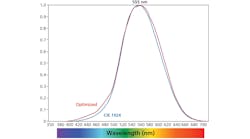A recent field study from the Lighting Research Center demonstrated that LEDs can be effective, energy-saving alternatives for incandescent downlights in elevators. The field installation using prototype LED fixtures showed an energy savings of 45 percent compared with the original incandescent lights. LED fixtures may also change the way elevator cabins are built, resulting in further energy savings.
Elevators ideal for “low-profile” LEDs
The study, titled “LED Low-profile Fixtures,” was sponsored by the California Energy Commission’s Public Interest Energy Research Program and the Architectural Energy Corporation. The major aim of the study was to develop and demonstrate an LED-based fixture that could replace incandescent fixtures in “low-profile” applications, where small size is important.
“LEDs are an ideal light source for elevators because their rugged design can withstand the vibrations and motions of the cabin,” says Jean Paul Freyssinier, an LRC research assistant professor who worked on the project. Commercial white LEDs also have the right size and produce light levels and color that work well in such an environment.
The LRC worked with Otis Elevator Co. to select and modify an elevator on the Rensselaer Polytechnic Institute campus for the field installation. LRC researchers modified the existing elevator ceiling panel, removing the original incandescent fixtures and replacing them with six prototype fixtures built with the help of Westinghouse Lighting Corp. Each prototype fixture consisted of six 3-watt Luxeon high-power white LEDs and a custom-designed reflector. The downlights were recessed into the ceiling and required less than two inches of space above the ceiling panel.
Field evaluation shows significant savings from LEDs
The six LED downlights required a total of 165 watts of electricity, compared with 300 watts for the original incandescent downlights, for an energy savings of 45 percent. The illuminance levels inside the elevator cabin were similar between each type of downlight.
As an added benefit, the LED fixtures are expected to last 40,000 hours, or more than four years being on all day, every day. Compared with traditional incandescent fixtures in elevators, which operate between 1,500 and 2,500 hours, LEDs can provide cost savings for replacement and maintenance, says Freyssinier. And because LEDs typically do not fail outright (their light output slowly decreases instead), maintenance crews can plan for relamping, rather than having to respond to lamp failures as they occur.
A survey conducted inside the original and LED-modified elevators showed that passengers ranked the low-profile LED installation as consistently better in terms of visibility, comfort, color and attractiveness of the light.
Possible changes to cabin designs lead to further energy savings
LED downlight fixtures could have an even greater impact on the elevator industry than just energy savings from lighting. The low-profile design of the LED fixture means that elevator manufacturers could shorten the height of the elevator cabin by as much as four to six inches, the current clearance needed for traditional incandescent and fluorescent fixtures. In turn, this means less materials would be needed to build the cabin, reducing the cabin’s total weight.
“Ultimately, the reduced weight translates to smaller motor and braking systems, hence saving more than just lighting energy in the end,” says Freyssinier. He also notes that low-profile LED products can open the door to new interior designs for elevators, such as panels of lighting on the walls, color-changing effects, and other kinds of lighted aesthetic or informational displays.
Project details
LED Low-Profile Fixtures Brochure
PIER Lighting Research Program Final Report
PIER program project website
Sponsors
California Energy Commission PIER Program
Architectural Energy Corporation
Westinghouse Lighting
Equipment donors
Advanced Transformer Co.
Lumileds Lighting
Site sponsors
Otis Elevator Co.
Rensselaer Polytechnic Institute








